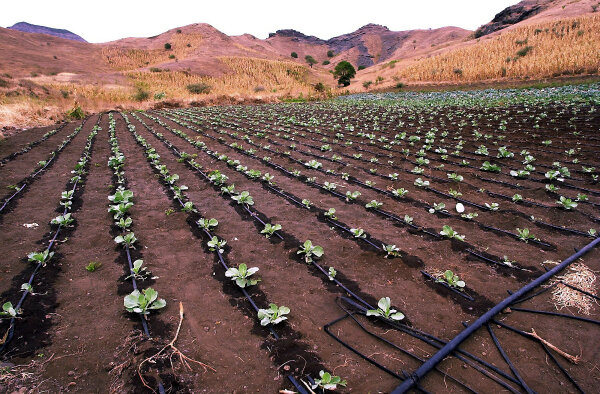Growing Onions!
 Half percent of the red onions in Kenya are imported from our neighboring country, Tanzania, as indicated by Food and Agriculture Organisation's (FAO) 2014 report. Kenyan Farmers have been doing their best to address the demand and close the gap, but there is still more supply to be achieved. This makes the Red Bulb Onion a very attractive commercial investment for the Kenyan market at the moment, since local production is not enough.
Half percent of the red onions in Kenya are imported from our neighboring country, Tanzania, as indicated by Food and Agriculture Organisation's (FAO) 2014 report. Kenyan Farmers have been doing their best to address the demand and close the gap, but there is still more supply to be achieved. This makes the Red Bulb Onion a very attractive commercial investment for the Kenyan market at the moment, since local production is not enough.Major types of onions farmed in Kenya are bulb onions and spring onions. Bulb onions take 3 to 4 months to reach maturity. Spring onions are easy to plant. You can even plant them at your kitchen garden. They are commonly used in vegetable salads or as seasoning in soups. Some of the health benefits of spring onions include lower blood sugar and decreasing blood pressure and cholesterol levels.
Of the two types, bulb onions are more popular than the spring ones due to their long shelf life and sweet taste. Currently, there are two different varieties of bulb onions in the market. There is the small, thin and firmly layered onion that has a strong pungent smell from Tanzania. The second one is the big loosely held variety that is grown locally, in Kenya.
The best areas suited for farming being Karatina, Oloitoktok, Naivasha, Kieni, Emali and Mai Mahiu.
Conditions for Onion Farming
Onions perform well in well drained, fertile, sandy loam, non-compacted soils. The ideal pH is 5.8 to 6.8. Onion farming is a worthy venture since it’s possible to grow onions throughout the year via Drip irrigation. Soil test with accredited laboratories is advised. The ideal temperatures onions need to grow are between 13-35 degrees centigrade. This means that onions can grow in most parts of Kenya. However, to maximize production in dry areas, one needs to invest in a greenhouse and drip irrigation. This is because greenhouses will optimize the temperatures since these areas are hot and irrigation will provide the much needed water.
In terms of requirements, apart from land that is an obvious fact, other requirements are DAP Fertilizer and seedlings. 1 kg of seedlings can be used in 1 acre while 20 grams of DAP Fertilizer is applied per square meter. You should note that there are different seed varieties and they perform differently under different conditions. Common hybrid varieties available in Kenya include Red Creole, Red Pinnoy, Jambar 1 and Red Bombay. The most popular seed variety in Kenya is the Jambar F1 since it produces high yield and the size of its onions are bigger. On our next article we shall be talking about challenges facing Onion growers,
Contact us through sales@dripsol.com





